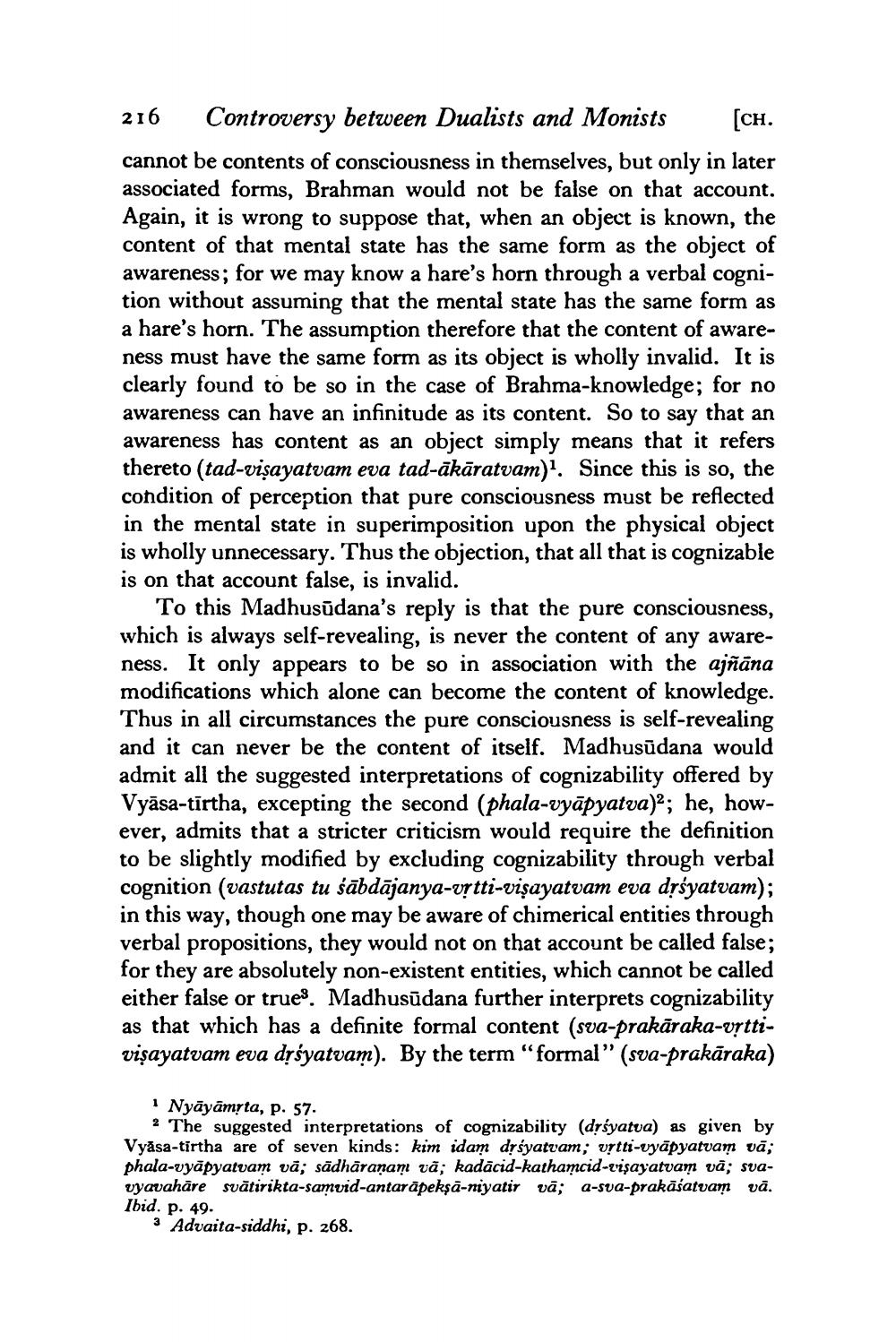________________
216 Controversy between Dualists and Monists [CH. cannot be contents of consciousness in themselves, but only in later associated forms, Brahman would not be false on that account. Again, it is wrong to suppose that, when an object is known, the content of that mental state has the same form as the object of awareness; for we may know a hare's horn through a verbal cognition without assuming that the mental state has the same form as a hare's horn. The assumption therefore that the content of awareness must have the same form as its object is wholly invalid. It is clearly found to be so in the case of Brahma-knowledge; for no awareness can have an infinitude as its content. So to say that an awareness has content as an object simply means that it refers thereto (tad-visayatvam eva tad-ākāratvam). Since this is so, the condition of perception that pure consciousness must be reflected in the mental state in superimposition upon the physical object is wholly unnecessary. Thus the objection, that all that is cognizable is on that account false, is invalid.
To this Madhusūdana's reply is that the pure consciousness, which is always self-revealing, is never the content of any awareness. It only appears to be so in association with the ajñāna modifications which alone can become the content of knowledge. Thus in all circumstances the pure consciousness is self-revealing and it can never be the content of itself. Madhusūdana would admit all the suggested interpretations of cognizability offered by Vyāsa-tirtha, excepting the second (phala-vyāpyatva)?; he, however, admits that a stricter criticism would require the definition to be slightly modified by excluding cognizability through verbal cognition (vastutas tu śābdājanya-vrtti-vişayatvam eva drśyatvam); in this way, though one may be aware of chimerical entities through verbal propositions, they would not on that account be called false; for they are absolutely non-existent entities, which cannot be called either false or trues. Madhusūdana further interprets cognizability as that which has a definite formal content (sva-prakāraka-víttivişayatvam eva dịśyatvam). By the term “formal" (sva-prakāraka)
Nyāyāmyta, p. 57. 2 The suggested interpretations of cognizability (drśyatva) as given by Vyása-tirtha are of seven kinds: kim idam drśyatvam; vịtti-vyāpyatvam vā; phala-vyāpyatvam vā; sādharanam vā; kadācid-kathamcid-rvişayatvam vā; svavyavahāre svātirikta-samvid-antarāpeksā-niyatir vā; 2-sva-prakāśatvam vā. Ibid. p. 49.
3 Advaita-siddhi, p. 268.




